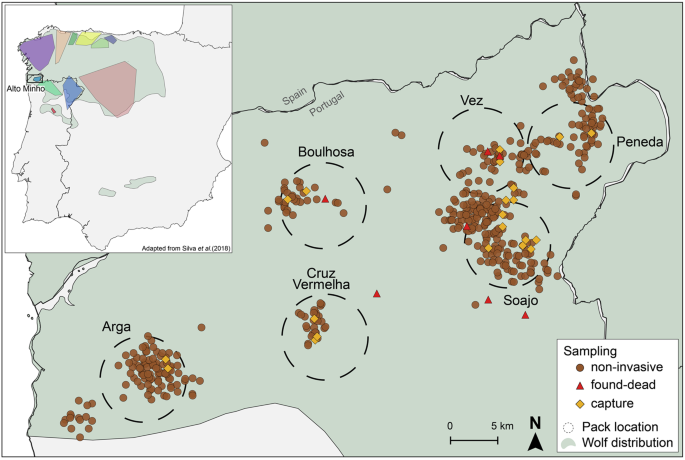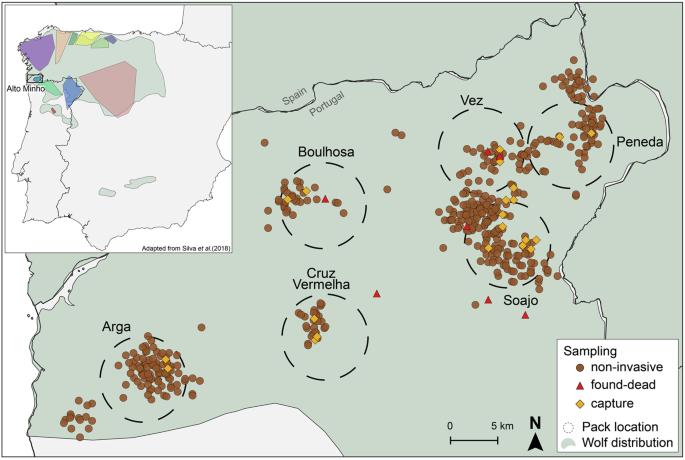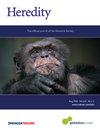基于亲缘关系的择偶和雌性相亲:狼群在人类占主导地位的景观中的近亲繁殖趋势。
IF 3.1
2区 生物学
Q2 ECOLOGY
引用次数: 0
摘要
近亲繁殖会降低后代的体质,对种群的遗传多样性和长期生存能力有很大影响。在社会合作性犬科动物中,近亲繁殖受出生地群体外异性亲属之间的地理距离以及邻近群体中相关个体的存在的制约。因此,迁徙到该物种所在的其他地区所面临的挑战也会影响近亲繁殖率。在人类高度密集的地区,这些问题尤为严重,因为在这些地区,即使是高度雌雄同体的物种,行动也会受到限制。在这项研究中,我们调查了葡萄牙西北部上米尼奥地区人类占主导地位的伊比利亚狼群的社会生态动态,该地区的狼群表现出较高的短距离散布率,与邻近地区的基因流动有限。我们假设,交配的发生与亲缘关系无关,这就导致了高亲缘相遇率下的近亲繁殖。利用一项为期 10 年的非侵入性遗传监测项目的数据,并结合亲缘关系估计和系谱重建,我们描述了上米尼奥狼群的遗传多样性、配偶选择和散布策略。与预期不同的是,我们的发现揭示了基于亲缘关系的配偶选择、较低的亲属相遇率和较少的近亲繁殖事件。我们观察到,雌性狼群中,尤其是雌性繁殖狼群中,恋亲现象非常普遍,最常见的繁殖策略是将恋亲的雌性狼群与无血缘关系的外来雄性狼群配对。总体而言,狼没有近亲繁殖,遗传多样性的时间变化也不显著。考虑到上米尼奥狼的人口趋势及其以人类为主的地貌,我们对研究结果进行了讨论。本文章由计算机程序翻译,如有差异,请以英文原文为准。


Relatedness-based mate choice and female philopatry: inbreeding trends of wolf packs in a human-dominated landscape
Inbreeding can reduce offspring fitness and has substantial implications for the genetic diversity and long-term viability of populations. In social cooperative canids, inbreeding is conditioned by the geographic proximity between opposite-sex kin outside natal groups and the presence of related individuals in neighbouring groups. Consequently, challenges in moving into other regions where the species is present can also affect inbreeding rates. These can be particularly problematic in areas of high human density, where movement can be restricted, even for highly vagile species. In this study, we investigate the socio-ecological dynamics of Iberian wolf packs in the human-dominated landscape of Alto Minho, in northwest Portugal, where wolves exhibit a high prevalence of short-distance dispersal and limited gene flow with neighbouring regions. We hypothesise that mating occurs regardless of relatedness, resulting in recurrent inbreeding due to high kin encounter rates. Using data from a 10-year non-invasive genetic monitoring programme and a combination of relatedness estimates and genealogical reconstructions, we describe genetic diversity, mate choice, and dispersal strategies among Alto Minho packs. In contrast with expectations, our findings reveal relatedness-based mate choice, low kin encounter rates, and a reduced number of inbreeding events. We observed a high prevalence of philopatry, particularly among female breeders, with the most common breeding strategy involving the pairing of a philopatric female with an unrelated immigrant male. Overall, wolves were not inbred, and temporal changes in genetic diversity were not significant. Our findings are discussed, considering the demographic trend of wolves in Alto Minho and its human-dominated landscape.
求助全文
通过发布文献求助,成功后即可免费获取论文全文。
去求助
来源期刊

Heredity
生物-进化生物学
CiteScore
7.50
自引率
2.60%
发文量
84
审稿时长
4-8 weeks
期刊介绍:
Heredity is the official journal of the Genetics Society. It covers a broad range of topics within the field of genetics and therefore papers must address conceptual or applied issues of interest to the journal''s wide readership
 求助内容:
求助内容: 应助结果提醒方式:
应助结果提醒方式:


